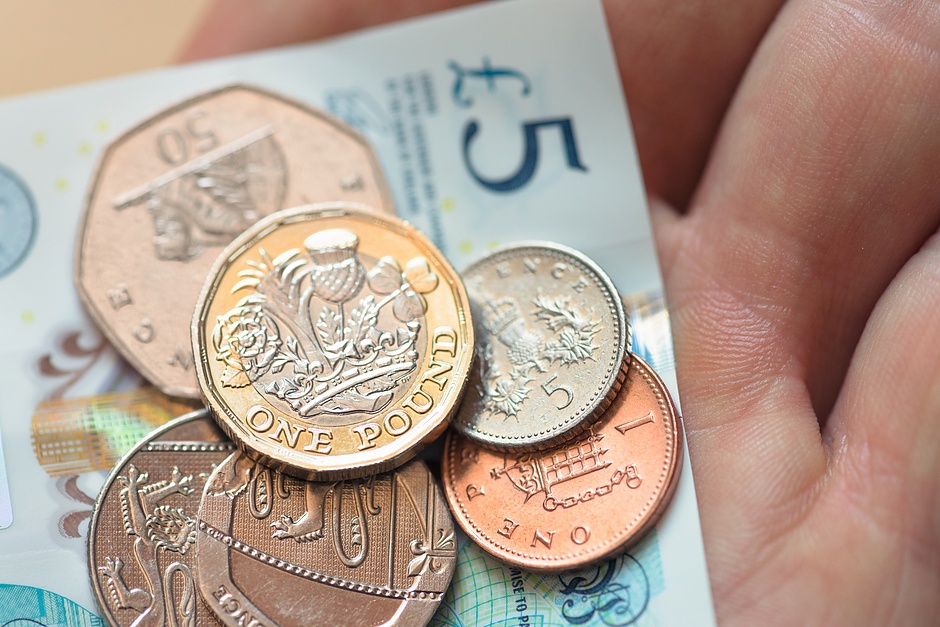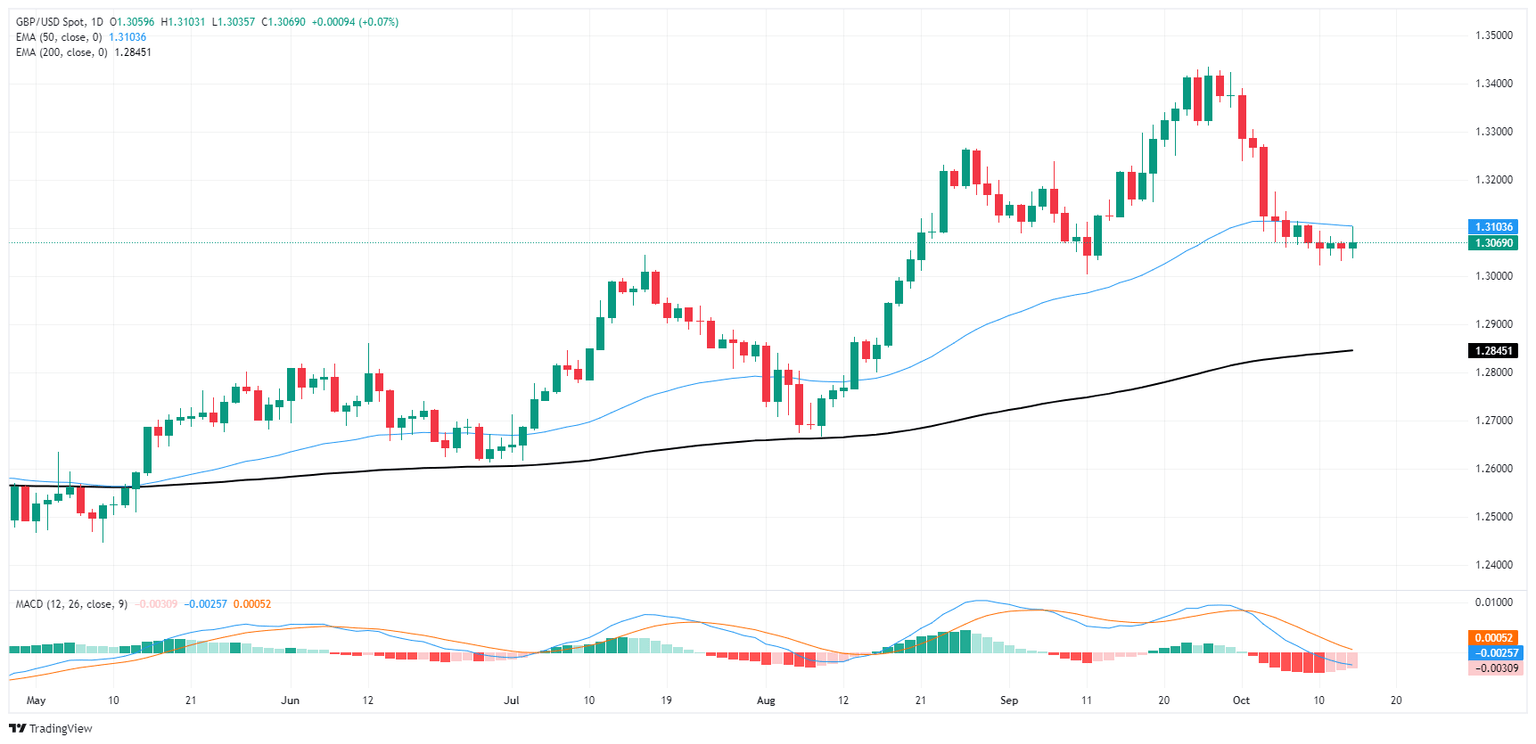GBP/USD cycles familiar territory ahead of UK CPI print
- GBP/USD churned just north of 1.3000 for a fourth straight trading day.
- UK labor figures were a non-starter on Tuesday.
- Cable markets are awaiting Wednesday’s upcoming UK CPI inflation update.

GBP/USD churned chart paper in familiar territory for a fourth consecutive trading day on Tuesday. Cable continues to cycle in a dead zone between 1.3100 and 1.3000 as GBP traders await meaningful UK data updates before picking a side to fall on.
UK wages data largely came in as expected on Tuesday, but GBP traders took note of an unexpected uptick in September’s Claimant Count Change, which jumped to 27.9K for the month, compared to the expected 20.2K against August’s 23.7K. On the other side of the same coin, the UK’s ILO Unemployment Rate also ticked down to 4.0% from the expected hold at 4.1%.
Wednesday’s upcoming UK Consumer Price Index (CPI) inflation figures are expected to broadly move lower in September. Headline CPI inflation for the year ended in September is forecast to fall to 1.9% YoY versus the previous period’s 2.2%. Core annualized CPI inflation, meanwhile, is forecast to tick down to 3.4% YoY from the previous 3.6%.
Greenback traders will be looking out for Thursday’s US Retail Sales figures for September, with the UK’s own Retail Sales print slated for Friday. US Retail Sales are expected to bounce to 0.3% MoM in September versus the previous 0.1%, while the UK’s own September Retail Sales figures are forecast to fall into contraction territory, from 0.1% to -0.3%.
GBP/USD price forecast
GBP/USD continues to churn in a volatility trap, squeezed between the 1.3000 major price handle and the 50-day Exponential Moving Average (EMA) falling into 1.3100. Technical indicators have become mired in near-term congestion warnings as Cable flounders on the low end of a pullback from late September’s peaks just north of 1.3400.
GBP/USD daily chart

Pound Sterling FAQs
The Pound Sterling (GBP) is the oldest currency in the world (886 AD) and the official currency of the United Kingdom. It is the fourth most traded unit for foreign exchange (FX) in the world, accounting for 12% of all transactions, averaging $630 billion a day, according to 2022 data. Its key trading pairs are GBP/USD, also known as ‘Cable’, which accounts for 11% of FX, GBP/JPY, or the ‘Dragon’ as it is known by traders (3%), and EUR/GBP (2%). The Pound Sterling is issued by the Bank of England (BoE).
The single most important factor influencing the value of the Pound Sterling is monetary policy decided by the Bank of England. The BoE bases its decisions on whether it has achieved its primary goal of “price stability” – a steady inflation rate of around 2%. Its primary tool for achieving this is the adjustment of interest rates. When inflation is too high, the BoE will try to rein it in by raising interest rates, making it more expensive for people and businesses to access credit. This is generally positive for GBP, as higher interest rates make the UK a more attractive place for global investors to park their money. When inflation falls too low it is a sign economic growth is slowing. In this scenario, the BoE will consider lowering interest rates to cheapen credit so businesses will borrow more to invest in growth-generating projects.
Data releases gauge the health of the economy and can impact the value of the Pound Sterling. Indicators such as GDP, Manufacturing and Services PMIs, and employment can all influence the direction of the GBP. A strong economy is good for Sterling. Not only does it attract more foreign investment but it may encourage the BoE to put up interest rates, which will directly strengthen GBP. Otherwise, if economic data is weak, the Pound Sterling is likely to fall.
Another significant data release for the Pound Sterling is the Trade Balance. This indicator measures the difference between what a country earns from its exports and what it spends on imports over a given period. If a country produces highly sought-after exports, its currency will benefit purely from the extra demand created from foreign buyers seeking to purchase these goods. Therefore, a positive net Trade Balance strengthens a currency and vice versa for a negative balance.
Author

Joshua Gibson
FXStreet
Joshua joins the FXStreet team as an Economics and Finance double major from Vancouver Island University with twelve years' experience as an independent trader focusing on technical analysis.

















